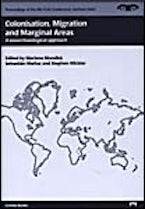Human migration tends to involve more than the odd suitcase or two - we often carry other organisms on our travels, some are deliberately transported, others move by accident. This volume of 12 papers offers a zooarchaeological approach to questions surrounding the nature and extent of human colonization and migration, and the adaptation of humans to new and sometimes extreme or challenging environments. The volume is divided into two parts: Part 1 takes up the theme of Human and Animal Migration and Colonisation. Contributors consider the relationship between human movements and the movements of animals and animal products; case studies look at Neolithic population movements in Oceania, the Norse colonization of Greenland, and the European settlement of Virginia. Part 2 focuses on the topic of Behavioural Variability in the So-Called Marginal Areas. Contributors offer various interpretations of the concept of 'marginality', from climatic extremes of the Arctic cold, and the heat and aridity of western North America, to the geographical remoteness of Patagonia, and the cultural circumstances surrounding the beginnings of transhumant pastoralism in prehistoric southeastern Europe.
Preface (Umberto Albarella, Keith Dobney and Peter Rowley-Conwy)
Part I. Human and Animal Migration and Colonisation
1. Introduction to the Session: Human and Animal Migration and COlonisation (Stephen Wickler)
2. Understanding Human Movement and Interaction through the Movement of Animals and Animal Products (Steven P. Ashby)
3. Plea for a Multidisciplinary Approach to the Study of Neolithic Migrations: the Analysis of Biological Witnesses and the Input of Palaeogenetics (Eva-Maria Geigl and Melanie Pruvost)
4. Zooarchaeology and Agricultural Colonization: an Example from the Colonial Chesapeake (Benjamin S. Arbuckle and Joanne Bowen)
5. Modelling Colonisation and Migration in Micronesia from a Zooarchaeological Perspective (Stephen Wickler)
Part II. Behavioural Variability in the So-called Marginal Areas: a Zooarchaeological Approach
6. Behavioural Variability in the So-called Marginal Areas from a Zooarchaeological Perspective: an Introduction (Mariana Mondini and Sebastian Munoz)
7. Faunal Exploitation Patterns along the Southern Slopes of the Caucasus during the Late Middle and Early Upper Palaeolithic (Guy Bar-Oz, Daniel S. Adler, Abesalom Vekua, Tengiz Meshveliani, Nicholoz Tushabramishvili, Anna Belfer-Cohen and Ofer Bar-Yosef)
8. The Archaeozoology of the Andean 'Dead Ends' in Patagonia: Living near the Continental Ice Cap (Luis Alberto Borrero)
9. The Highs and Lows of High Artic Mammals: Temporal Change and Regional Variability in Paleoeskimo Subsistence (Christyann M. Darwent)
10. Identifying Dietary Stress in Marginal Environments: Bone Fats, Optimal Foraging Theory and the Seasonal Round (Alan K. Outram)
11. The Worst of Times, the Best of Times: Jackrabbit Hunting by Middle Holocene Human Foragers in the Bonneville Basin of Western North America (Dave N. Schmitt, David B. Madsen and Karen D. Lupo)
12. A Zooarchaeological Perspective on the Origins of Vertical Transhumant Pastoralism and the Colonization of Marginal Habitats in Temperate Southeastern Europe (Elizabeth R. Arnold and Haskel J. Greenfield)
13. A Review of the Session: Margins and Marginality (Anthony J. Legge)











